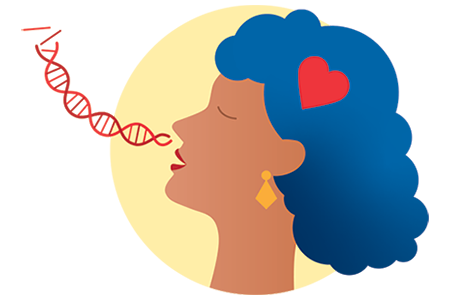The rising risk of food allergies
By MAS Team
Childhood food allergies are increasing in numbers and complexity across the globe, including in New Zealand, and there’s not one clear cause.

In her two-decade-long career, specialist allergy dietitian Anna Richards has been watching as incidents of food allergy in children rise in numbers and complexity.
“When I first started, it wasn’t uncommon for children to have a single allergy or a couple of allergies. But now we see multiple and more complex food allergies often persisting into adulthood.”
Common food allergens include cow’s milk, egg, soy, wheat, fish, shellfish, peanuts, and tree nuts. Novel or new allergies include lupin flour, commonly used in Europe, and sesame, possibly due to the popularity of hummus.
While the jump in numbers with a food allergy could be down to better and earlier diagnoses, Richards says she’s concerned many parents are diagnosing their children without seeing a doctor and eliminating food groups unnecessarily.
The Remuera-based dietitian says the rise in childhood food allergies is part of a worldwide trend with an increase in all autoimmune disorders that have left specialists wondering what the cause might be – and they’ve come up with a few ideas.
First introduced in the late 1980s by David P. Strachan, a professor of epidemiology, the hygiene hypothesis proposed that a lack of exposure to germs can increase an individual’s susceptibility to allergies and disease. “Basically, we see lower rates of allergy in children whose immune systems have to work a bit harder, like those living on a farm, with siblings, or having pets. Meeting a bug in early childhood years seems to be protective,” Richards says. She also sees higher rates of allergy in children born by caesarean as they are born with a sterile gut. “I always ask about the route of birth, and children that have allergy and gut issues who are born by caesarean are over-represented in my practice. Initial gut colonisation occurs as the baby passes through the birth canal. If that doesn’t happen, there is a different mix of gut microbiota.
This hypothesis considers when and how children are exposed to allergens, theorising that exposure to food allergens through the skin alone can lead to an allergy. But consumption of these foods at an early age concurrently with topical exposure may promote tolerance. Richards says this is particularly prevalent in children who have dry eczematous skin and are already on a slippery slope. “I have seen cases of anaphylaxis on the first consumption of egg, for example, when raw egg has previously been smeared over dry eczematous skin as a treatment.”
Lack of vitamin D has been linked to the onset of childhood atopy and food allergies. Richards says higher rates of allergies are seen in babies born in winter and spring compared to those born in summer and autumn. “The body only stores vitamin D for about three months. This is particularly noted in colder countries or parts of New Zealand where, unless mum walks around in shorts and t-shirts 12 months of the year or takes off to sunny Fiji in winter, her breast milk will have a poorer vitamin D status.”
Richards says guidelines now encourage parents to feed their babies anything and everything as soon as they’re old enough to eat solids. And children to continue to eat those foods regularly throughout childhood.
Former advice suggested parents avoid known food allergens for the first few years of life. However, that has been proven to have little impact in preventing food allergies, and Richards says it could actually increase prevalence. Plunket guidelines recommend introducing one food at a time and to add a new food every two to four days so parents can identify which food caused a reaction. If there are no early indicators of allergy, this process could be sped up.
Richards says parents should keep feeding their children allergens once they’ve been introduced as she sees cases where a type of food is introduced to a child once or twice and then not eaten again for several months, resulting in a severe reaction. “Ideally, children should be eating an allergen two to three times a week but at least once a week once it is introduced. Eat everything and anything, and keep eating it.” And she warns parents against cutting out foods unless their child is formally diagnosed with an allergy. “These days, parents are able to access their own allergy tests. Or they are accessing their own test results without GP guidance in interpreting the results, often resulting in foods being unnecessarily excluded. If the child is consuming the food happily but the test shows raised antibodies, it is important they do not stop eating the food as it may result in them developing a full-blown allergy. Tolerance can be lost remarkably quickly. “No matter what the test says, if your child currently tolerates it, keep on eating it, otherwise you may be setting your kids up for a fall.”

Dr Dougal Sutherland, Clinical Psychologist and teaching fellow at Victoria University of Wellington, shares his top advice for staying mentally well while studying.

Some simple and effective steps for Mental Health Awareness Week 2023 that are easy to incorporate into every day and their mood-boosting effects add up over time.

We speak with leading UK-based neuroscientist Dr Hannah Critchlow to talk about her findings and the nuts and bolts of how we make simple everyday choices.